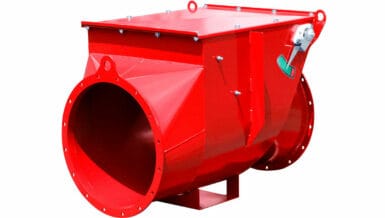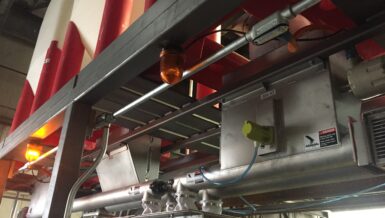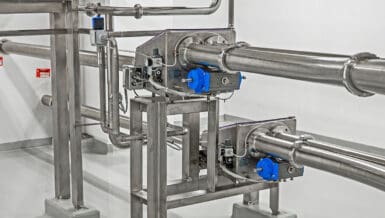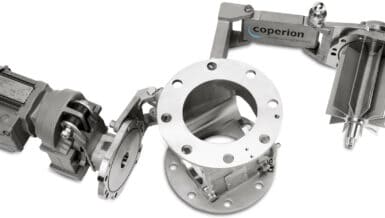Jacques Lambalais, Sales Director at StuvEx.
StuvEx has made explosion, and in particular dust explosion, its core business. While the company was founded in 1975 and only offered electrical equipment for special ADF applications, over the years it has expanded its range and services to include more specific safety equipment, including explosion vents, isolation valves and grounding control systems. StuvEx was also one of the first to offer an ATEX certified explosion suppression system. Jacques Lambalais says: “Within the group, we have the ISMA entity, which specialises in risk analysis and ATEX assistance, both before and after the explosion to explain it. We are structured to meet almost 100% of needs, from analysis to the study and delivery of turnkey solutions.
Avoiding secondary explosions
There are currently various solutions to stop or limit the effects of an explosion: using discharge vents, making the assembly withstand a certain pressure, or suppressing the explosion. StuvEx has a good understanding of dust explosion phenomena in industrial environments and offers the Ventex® valve. It is important to bear in mind that a dust explosion can generate secondary explosions because it resuspends combustible powder and fine dust,” explains the sales manager. This dust can then fuel another explosion a little further down the process. The Ventex® valve therefore prevents the propagation of explosions by isolating the first explosion.
Ventex® valves of the new generation in DN 300.
Resistance to maximum explosion pressure
Unlike conventional explosion check valves, the Ventex® valve has been designed to withstand the maximum explosion pressure. “For example, when using a hopper designed to withstand a maximum pressure of 10 bar, which is generally the maximum pressure allowed in a confined environment, closing the Ventex® valve will contain the explosion within this volume,” says Jacques Lambalais. The Ventex® valve can be used at higher velocities than previous versions as standard: the valve is now suitable for air velocities of up to 30 m/s in the direction of the explosion, compared to 20 and m/s25 previously. These velocities are valid for all diameters in the range, from DN 100 to DN 600. These values could be increased after a complete redesign of the valve. Numerous tests have been carried out to validate the performance and to give slightly more flexible installation guidelines. Thanks to the new design, the pressure losses are 20% lower than the previous range.”
Installation before or after elbows
The Ventex® valve can be installed directly before or after the pipe bends. It is also possible to install double bends or combinations of bends in different directions. This facilitates the integration of the Ventex® valve into the process. The installation distances for use with organic dusts are extended from 2 to 15 m depending on the nominal diameter.
A new seal
The seal of the new Ventex® valve is installed without the use of tools using a new and patented technique. Numerous explosion tests with the Ventex® valve have confirmed the technical necessity of a seal to completely close the pipe in case of an explosion. The seal is also an important damping element to absorb the high acceleration when closing the valve during an explosion. The seals of the new generation are no longer glued, but inserted using a new technique. This makes maintenance easier, quicker and therefore less expensive and allows for a quick return to service after intervention.
The importance of interviews
As an authorised Rico dealer, StuvEx is able to carry out overhauls of the manufacturer’s equipment. StuvEx not only provides installation instructions for the devices, but also offers annual inspection visits and five-yearly visits during which all seals are changed. Jacques Lambalais says: “For active systems (consisting of detectors, control units and activators), users are very aware of the need to maintain the equipment. For passive equipment, however, it is more difficult to think about. A “passive” valve does not mean that the device should be forgotten and that its function will be guaranteed after 10 years. Periodic checks are necessary to ensure that the valve moves well, that there are no signs of wear or abrasion, that the earthing is done properly, etc. We insist a lot on the conditions of the valve. We put a lot of emphasis on the installation conditions as well as regular maintenance.










































